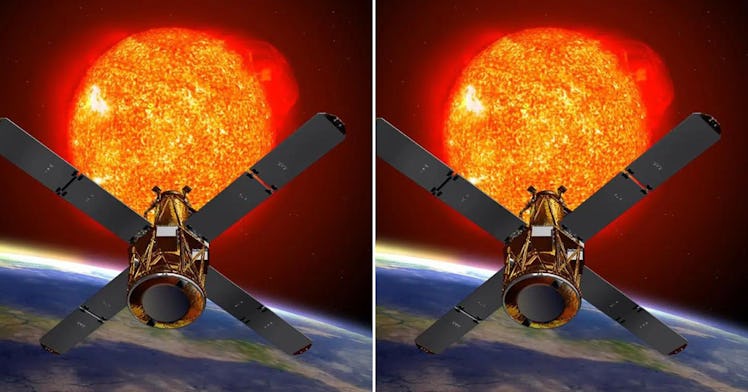NASA Expects An Old Satellite To Fall To Earth Today. Can You Watch?
There is a massive, old satellite on track to fall to Earth today. But, unlike a movie scenario, experts say there’s nothing to worry about.

If it sounds like the plot of a B-grade sci-fi movie, it’s because it basically is one: scientists discover that an object from space is headed toward Earth. And this massive object is on track to smash through our atmosphere in just a matter of days, and people scramble to find out how to avoid disaster or accept their fates.
Well, part of that scenario is true — in real life, there actually is a big old NASA satellite on track to fall to Earth today. But, unlike the movie scenario, experts say there’s nothing to worry about in this situation. So when will it hit Earth? Will scraps hit the ground, or will it all burn up in the atmosphere? And can we watch it fall? Here’s what you need to know.
What is this satellite that’s about to hit Earth today?
According to NASA, the satellite set to crash back into Earth is its Reuven Ramaty High Energy Solar Spectroscopic Imager—or RHESSI, for short.
The satellite was sent to space in 2002 and was used by NASA until it was decommissioned in 2018. According to NASA, the satellite was observing coronal mass ejections (“large expulsions of plasma and magnetic field from the Sun,” NASA explains) and solar flares.
In its time, it recorded more than 100,000 solar events and helped the agency “understand the underlying physics of how such powerful bursts of energy are created.”
Now, that 660-pound satellite is falling back down to Earth.
When and where is the satellite expected to hit Earth?
According to NASA, the Department of Defense has predicted the RHESSI spacecraft will fly through Earth’s atmosphere around 9:40 p.m. EST today, April 19. However, there’s a 10-hour window so it could happen anytime between 11 a.m. on April 19 to 7 a.m. on April 20.
The location of where the satellite is set to hit Earth was not disclosed by NASA, as the agency says there is some uncertainty about its re-entry location. But they are monitoring the satellite and keeping a close eye on the situation.
Why you shouldn’t worry about the satellite headed towards Earth.
Most of the spacecraft is set to burn up as it makes its way through Earth’s atmosphere, “but some components are expected to survive reentry,” NASA said in a statement.
However, the agency said the “risk of harm coming to anyone on Earth is low,” or around a 1-in-2,467 chance of harm.
You can watch the RHESSI satellite if you want to.
If you’re interested in tracking where this satellite is with the kids, the Space-Track tool allows you to follow the debris from the comfort of your home. To use the tool, you’ll need to create a free account, then log in.
From there, you can type in the name of the debris you want to find (in this case, it would be from RHESSI), and the tool will share the parameters and give a more current prediction of the time it’s set to re-enter Earth.